|
Ref : 1147
A very good English violin by
|

go to Home Page see more Violins |
In his noted reference work 'The Universal Dictionary of Violin and Bow Makers' William Henley refers to the maker, Adam Mackie, in superlatives, holding his work in very high esteem: 'Scroll of exquisite curves. Everything beautifully finished. Sound-holes and purfling deserve similar compliments. Fine belly wood of perfect straightness of grain. Backs, ribs and scroll of Turkish maple. Oil varnish […] always effectively applied.' This positive appraisal much describes this violin, made in 1928, when Mackie was at the peak of his powers.Referring to this instrument as Scottish would not be correct - although Mackie was born and apprenticed in Aberdeen and Glasgow, he spent several years in Australia, New Zealand and Tasmania before settling in Johannesburg (South Africa) in the early 1920s. Throughout his life he carefully studied old Italian instruments, exploring in particular their tonal properties. This resulted in a publication on 'The Secret of Italian Tone', which Henley considers as a real contribution in this field. He copied in particular a Strad from 1720, which may have served as a model for this violin, but an opinion has been expressed that this violin could have been copied from G. B. Guadagnini.
In this violin one immediately notes the exquisite one-piece back. Workmanship throughout is impeccable, notably in the Fs, purfling and corners.
This violin is very well toned with focus and easy response along with ease of execution.
 |
 |
 |
||
 |
Dimensions : Length of back: 35.7 cm
Condition : This violin is completely free from cracks or repaired cracks. The neck though has been reset and has a shim under the fingerboard and a holding pin in the neck button. This work is structurally stable and the elevation is within spec.
Provenance : Withheld
Price : On request
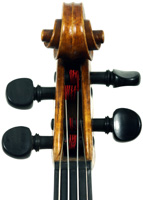 |
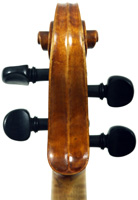 |
 |
 |
 |
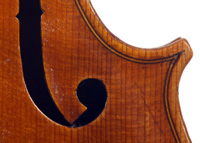 |
 |
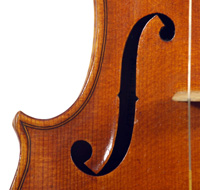 |
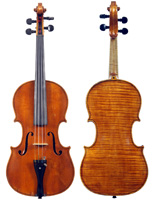 |
 |
 |
 |
|||||
 |
 |
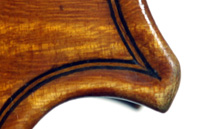 |
 |